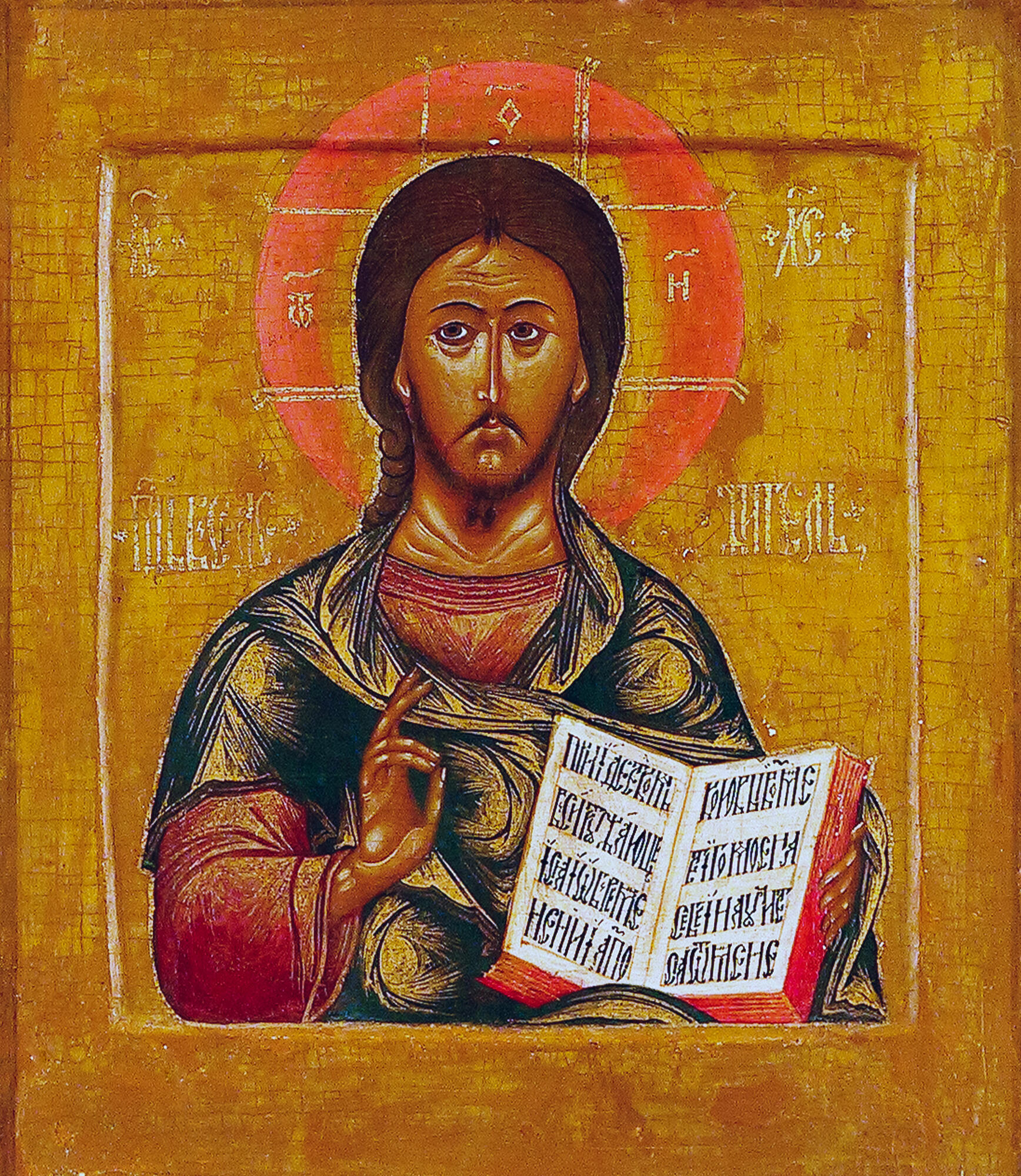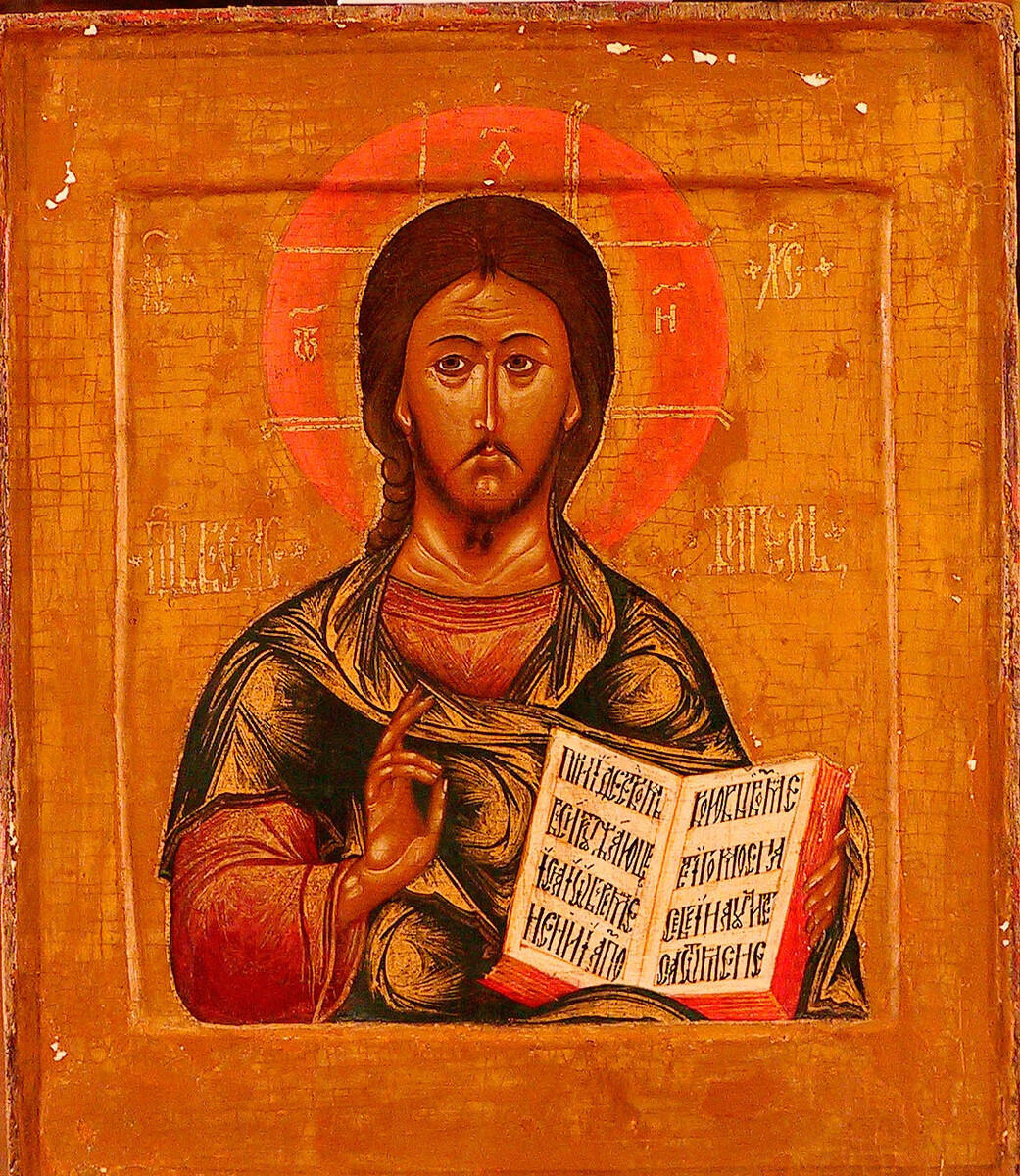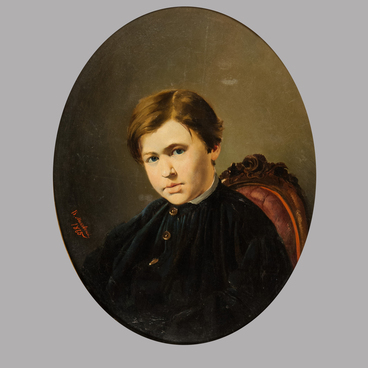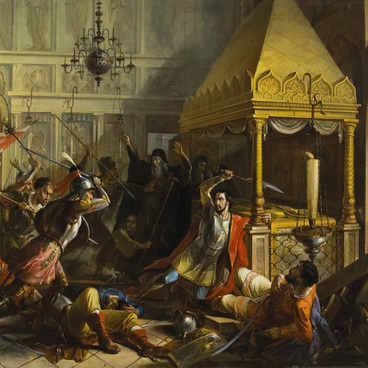The icon “Christ Pantocrator” is the only artifact preserved from the last owners of the Bilibin-Chistokletov city estate, which has housed the Kaluga Museum of Fine Arts since 1970.
The Merchants-Old Believers Chistokletov acquired this estate from the Bilibins in the early 1860s. The most famous representative of this family was Grigory Grigoryevich Chistokletov, a local historian, bibliophile, numismatist, and hereditary honorary citizen of Kaluga. The icon belonged to his younger sister Antonina Grigoryevna Chistokletova. The back of the icon board features an inscription in ink “Antonina Chistokletova”.
All that is known about her is that she graduated from the Kaluga Gymnasium in 1877; after the death of her brother, she and her sister inherited the estate. It is established that after 1917 the sisters left for Moscow. The icon preserved in the house was donated to a museum of local lore, and in 1975 it was transferred to the Kaluga Regional Art Museum.
The icon “Christ Pantocrator” from the museum’s collection is a half-length version of the image of the blessing Christ. This is one of the most common images in the iconography of Christ. The image of the Pantocrator occupies the main place in the church: it can be seen in the central dome, on the altar wall or in the center of the Deisis composition of the iconostasis. This iconographic type when God is represented as the Heavenly Lord became very popular in Russia and is called “Christ Pantocrator” or “Christ the Almighty”.
This iconographic type remained almost unchanged until the 20th century. In the presented icon, Jesus Christ is depicted facing the viewer against a bright orange background framed by a red patterned border. The face of Christ is painted by dark ochering. Ochering (“vokhrenie” in Russian) is the process of adding progressively lighter layers over one another to transition from the main dark tone to lighter ones. Thanks to this technique, His face spectacularly stands out against the background of a silver cross-shaped halo with the inscription “I am who I am”. The dark red chiton is decorated with a large pattern, the motif of which is characteristic of 18th–century fabrics. The green clavus and himation with white highlights set off the rich red tone of the chiton and match the decorative nature of the background. The icon is painted in a traditional academic manner with baroque elements, which are manifested in the color palette of the icon, the decorative quality of Christ’s clothes, the edges of the Gospel, and in the margins.



